2017 Polaris 800 Pro-RMK 174 Review + Video
Is Polaris setting out to make “long” and “flickable” synonymous?
Before we dig into Polaris‘ new 800 Pro-RMK 174 mountain tamer, we’ve got a quick war history lesson for you: engine displacement wars, track length wars, weight-weenie wars and motor wars – two-stroke versus four-stroke.
Way back when, the weight wars began with Arctic Cat and its 1M 900 followed by Cat’s M7. Then Ski-Doo threw in a much lightened REV, the XP Summit X, followed by Polaris really laying the hammer down with its Pro Ride Pro-RMK 155 with belt drive.
Then, we have Ski-Doo taking its XM Summit X (third-generation REV Summit) by stretching it out to a 174. This is like Ski-Doo, it being the first with a 151, a model year ZX-chassis Summit X 700, and the first with a 16-inch wide track; first Generation REV Summit – 2003.5.
Get the Flash Player to see this player.
Now the displacement wars kick in again. Arctic Cat had its 900 1M and King Cat, Ski-Doo had a 1000 cc Summit, then life settled in with Arctic Cat, Ski-Doo and Polaris settling in on 800 as the displacement of choice for their large-bore two-stroke motors.
On the other end of the spectrum, Yamaha moved to four- and three-cylinder four-stroke motors with displacements of 998cc and 1049cc
Now Yamaha and Arctic Cat share a 998cc Yamaha four-stroke three cylinder motor with factory installed turbocharger. We doubt, but could be proven wrong, Ski-Doo and Polaris will challenge this.
And another “Now” is that Ski-Doo broke the 800 glass ceiling with a new 850 twin cylinder two-stroke, in the 154 Summit and new 165 Summit – X and SP.
Our focus here is Polaris’ new AXYS Pro-RMK toy; the 174 Pro-RMK LE.
The Concept
Polaris was not going to release a 174 just because Ski-Doo did. Polaris waited, making the conscience effort to release a 174 when all tests, engineering and design specifications first satisfied Polaris’ most critical customers, its own mountain design team (who are hard mountain riders themselves) and its core of backcountry artists, Dan Adams, Chris Burandt, Cole Willford and Matt Entz, to name a few of the most popular. However, Polaris did feel the squeeze when Ski-Doo released its 174 XM Summit X. Still, Polaris stayed the course, holding off on its 174 release until it knew it was dialed in.
Each Polaris RMK/SKS has a rear suspension designed for specific need and track length. The 155 is not a 144 with longer rails. A 163 is not a 155 with longer rails. And the 174 is not a 163 with longer rails.
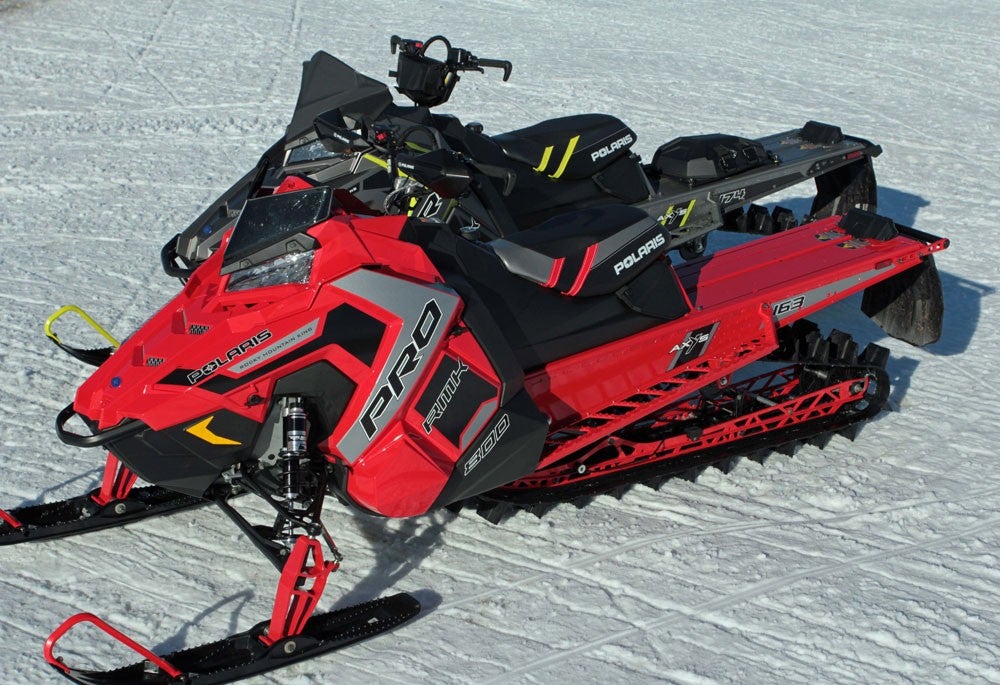
Up close is the 163, in back the 174. The 174 LE places the AXYS Pro-RMK 163 as the middle long-track, with the 155 as the short long-track.
Polaris’ goals with the 174 are to give deep powder fans more choices. The 155 Pro-RMK is the snowmobile Polaris sells most (it is also the most-often purchased snowmobile by all snowmobilers). The 163 has been Polaris’ super-deep-snow go-getter for many years. Now, the 163 Pro falls in the middle among the AXYS Pro-RMK line.
All AXYS Pro-RMK mountain snowmobiles that use the Series 7.0 mountain track, which is a 15-inch wide track with three-inch tall paddles, relies on two gears and a chain to spin the track drivers. Any Pro-RMK with the Series 6.0 paddle track, a track that is 15 inches wide with 2.6-inch paddles, uses the Quick Drive Low Inertia belt drive system.
The 174 Pro-RMK LE comes built with one track only, the Series 7.0. No option exists for the 174 to muster along on a Series 6.0 track with belt drive. We understand this philosophy. But, as we have discussed amongst ourselves, we believe Polaris should trust its customers and let them have a choice: Series 6.0 or Series 7.0, but to keep manufacturing costs down, keep the chaincase system for the 174. We feel drivers may want to have the fast spinning 2.6-incher and give the 174 permission to be a very early winter or late fall snowmobile, and a spring-time vehicle.
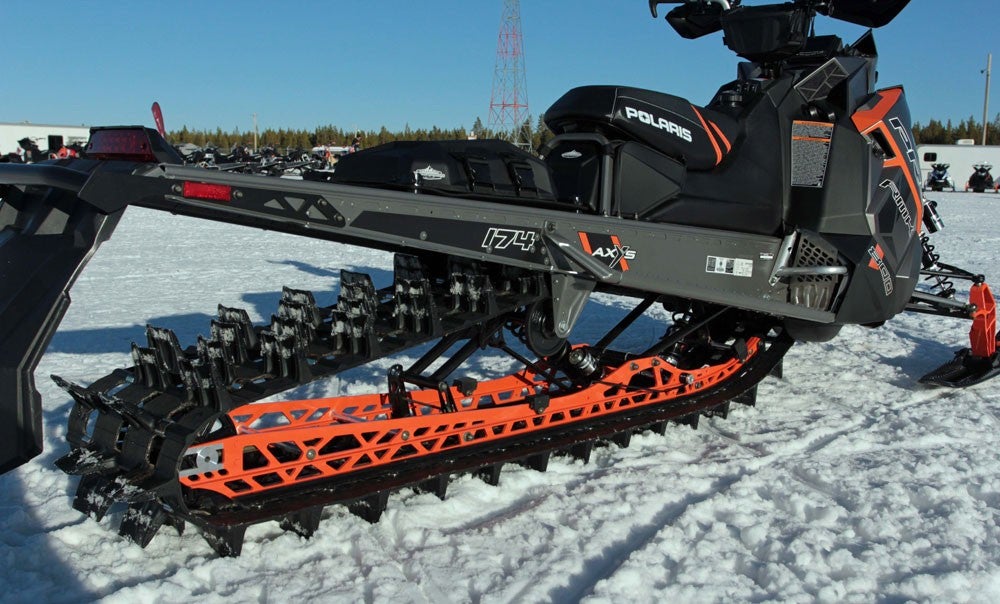
With one track option, the Series 7.0, the 174 LE will float and climb. The rear suspension is also purpose-designed and built for this application.
The 174 RMK LE chaincase has a 12 percent lower gear ratio to help the Series 7.0 track spin at its optimum. However, and take note, its final drive, when at peak rpm, is the same as the AXYS Pro-RMK 163. Nice.
How It’s Done
Start with the 163 with Series 7.0 track. Between the two, rider ergos are the same, as well as the front end. The two share the same drive train – motor, clutches and chaincase.
How the two are different is that the 174 has more traction – lift – due to a longer track and rail. The two have the same balance (agility, nimbleness) that is achieved by a different rear suspension design for the 174 LE. The 174 LE has unique rear suspension front- and rear-torque arm mounting locations to control pitch and to maintain the known AXYS Pro-RMK feel.
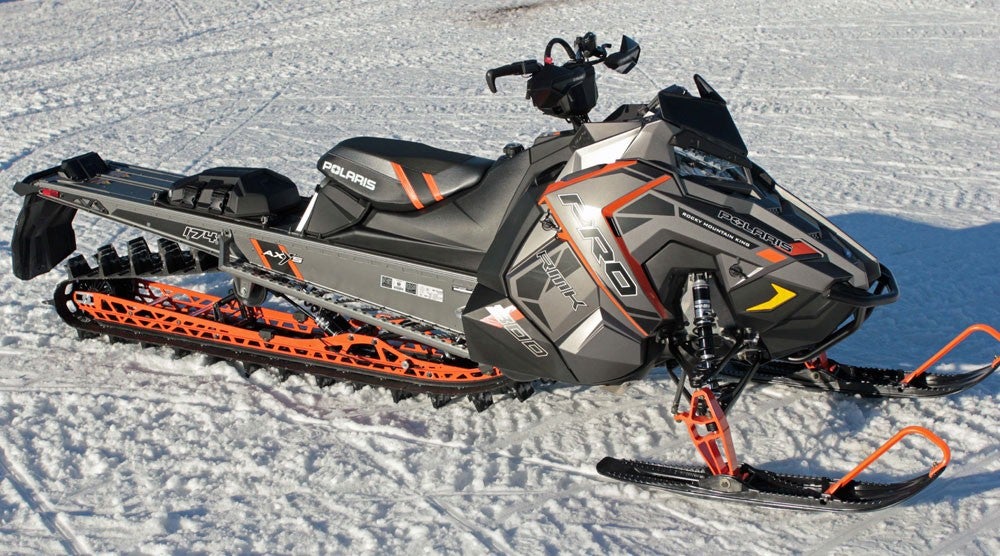
It may be long, but its feels 163-long. The 174 LE is purpose-built for bottomless snow days, but its DNA is AXYS Pro-RMK.
Who Wants A 174
So who wants an AXYS 174 800 Pro-RMK? You do, if you want a snowmobile that stays glued to a mountain’s spine like a zipper to a jacket. You do, if you want a snowmobile that will not get ahead of you, the operator. You do, if you chase bottomless snow and getting stuck is something you abhor.
The 174 is for a couple customers. For those who want ultimate lift and to stay on top in deep snow, and to travel farther on the deepest powder days.
The 174 LE is also for the Clydesdale customer where he or she is weighty; the 174 with its extra length acts like a 155 or 163, depending on how many pizzas one carries on their waist.
What We’ve Learned
The 174 is a snowmobile that is long, but does not feel it has a track that is nine-inches longer than a 163. The 174 LE feels like a 163 in that it rolls right and left into a hillside as simply as the 163, but when pointing North, the 174 holds its nose mostly down throughout the steep ascent; ski pressure is almost always present. This is condition dependent, hard packed Spring-like snow will grant the 174 to lift its nose, but not like that of the 163 or 155.
When we hammered Ski-Doo’s XM Summit X 174, we noticed it felt much different than its sibling, the XM Summit X 163. It was planted, as expected. It rolled right and left with ease, and it held a sidehill. The XM 163 X when sidehilling would wash down or when throttled-up, would drive its nose up hill, both of which would break the driver’s sidehill line; the difference between yesteryear’s XM Summit X 163 and the 174 were noticeable, which we suspect is the reason why Ski-Doo did not release a GEN-4 REV Summit X 174 850 for this winter season.
Contrast the above between Polaris’ 163 Pro-RMK and 174 Pro-RMK where in our opinion and experience, both feel much the same, especially when sidehilling and changing direction to back track – turning uphill, changing body position from one runningboard to the opposite side.
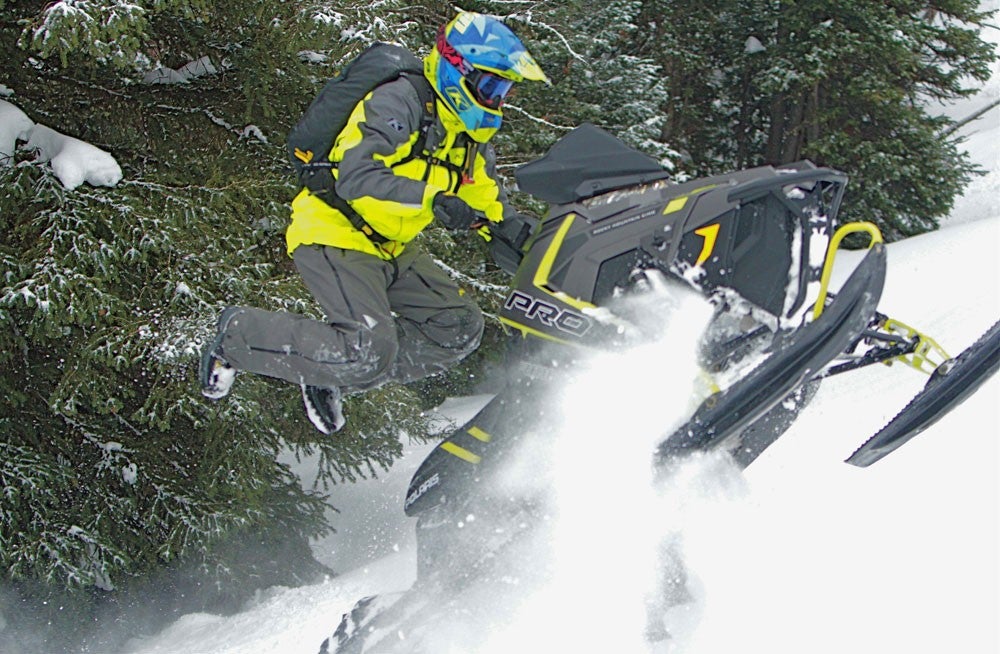
When time comes to make the 174 163-like, the 174 will be. But, it is mostly at home on the ground churning up a mountain side.
Also, when pinching the throttle for quick nose lift, the 174 will not stand up like the 163. It will mostly keep its skis on the snow in an ascent, allowing the driver to make a turn out or navigate between the trees while he/she makes the peak – all at low vehicle and track speeds. If speed has bled off, and centrifugal forces prevent the 174 from staying glued to the mountainside, the 174 driver simply needs to hop on the upside runningboard and pull the handlebars into the hill to compensate for the slower speed. Can all this be done effortlessly? Yes. Credit the AXYS chassis and the 174’s 163-like nimbleness.
The Package
The 174 LE equipped Pro-RMK comes with one engine only, the reliable 800 Cleanfire H.O. (High Output) that gives the 174 an excellent power-to-weight ratio for quick throttle response. Estimated dry weight is 442 pounds. The motor’s pistons have grooves to increase engine life through oil dissipation and cooling, three-stage electronically-controlled exhaust valves, electronic oil pump, high-efficiency intake and exhaust, V-Force Reed valves, and lightweight crankshaft.
The front and rear suspension utilizes Walker Evans Piggyback Shocks with compression adjusters and remote reservoirs. The front A-arms are forged aluminum-built. The one-piece, forged A-arms reduce unsprung mass leading to a better ride quality and increased maneuverability.
The lightweight and rigid rear suspension is designed to control pitch by managing weight transfer – track torque from front to rear; the 174 maintains a gentle track approach angle to the snow. The rear rail design helps lift the rear skid, just enough, while driving the vehicle forward.
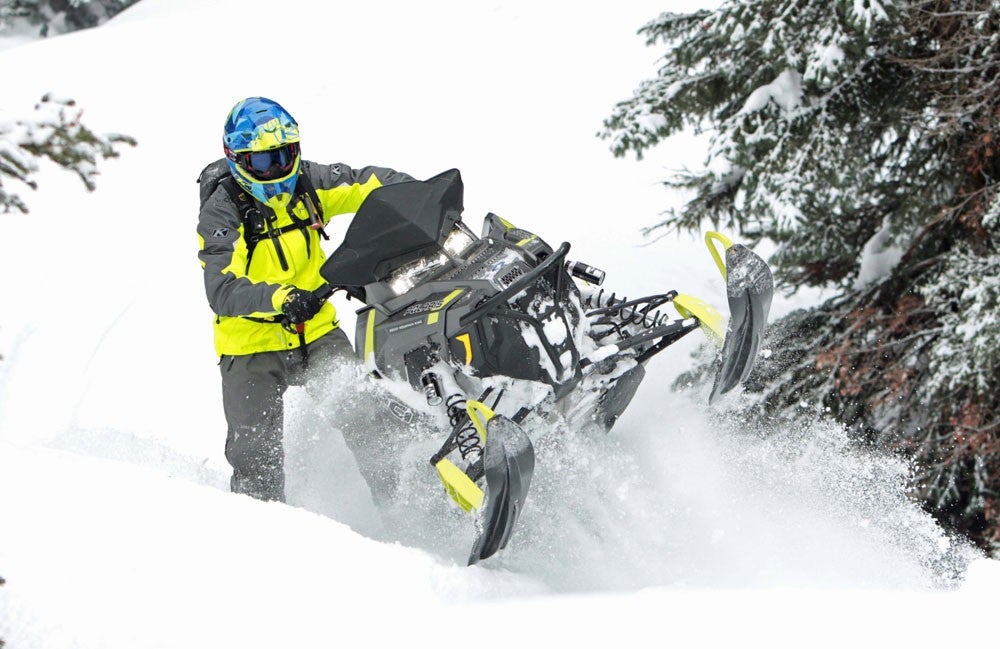
On those bottomless powder days, when flotation is needed, and low ground speed is also wanted, the 174 delivers.
Like its siblings, the 174 has ProTaper handlebars, Burandt Adventure storage bags, choice of manual or electric start, PowderTrac runningboards, PRO-Lite seat, LED lights and Polaris’ Interactive Digital Display (PIDD).
The PIDD is a full-color high-resolution 4.3-inch screen with full color, LCD digital display to provide information on current speed, engine speed, and has dual trip meters, average speed, max speed, engine/trip hours and odometer, engine coolant temperature, diagnostics and maintenance warnings, air temperature and time of day (12- or 24-hour clock format). Bluetooth functionality enables the PIDD to communicate with the rider’s cell phone and provide notification of incoming calls or texts; it also displays phone battery and signal strength and has GPS/mapping capabilities ride planning.
Polaris charters its own course. The AXYS RMK came to market when Polaris felt it was ready. Likewise, the 174 only came to model year 2017 when Polaris felt it, too, was ready. No rush to market.
2017 Polaris 800 Pro-RMK 174 LE Specs
| Engine | Polaris Cleanfire two-stroke high-performance 795cc; bore/stroke of 85mm/70mm; two-cylinder, liquid-cooled; Cleanfire electronic fuel injection system; dry sump lubrication |
| Horsepower | 155+ |
| Drive | Chaincase drive with Polaris P85 driver and TEAM LWT driven |
| Front Suspension | AXYS RMK adjustable A-arm; Walker Evans piggyback shocks; up to 9-in of travel; Gripper skis |
| Rear Suspension | Polaris AXYS RMK parallel slide rail; Walker piggyback gas shocks; up to 15.95-inches of travel |
| Length | 142.0 in |
| Height | 49.125 in |
| Width | 46.5 in |
| Ski Stance | Adjustable 39-40-41 in |
| Track | 15 x 174 x 3.0 Series 7 |
| Weight | 442 (claimed) |
| Brake | Polaris AXYS RMK LWT hydraulic disc brake |
| Features | Optional storage bags, windshields |
| Fuel Capacity | 11.5 US Gal |
| MSRP | US$15,199 |



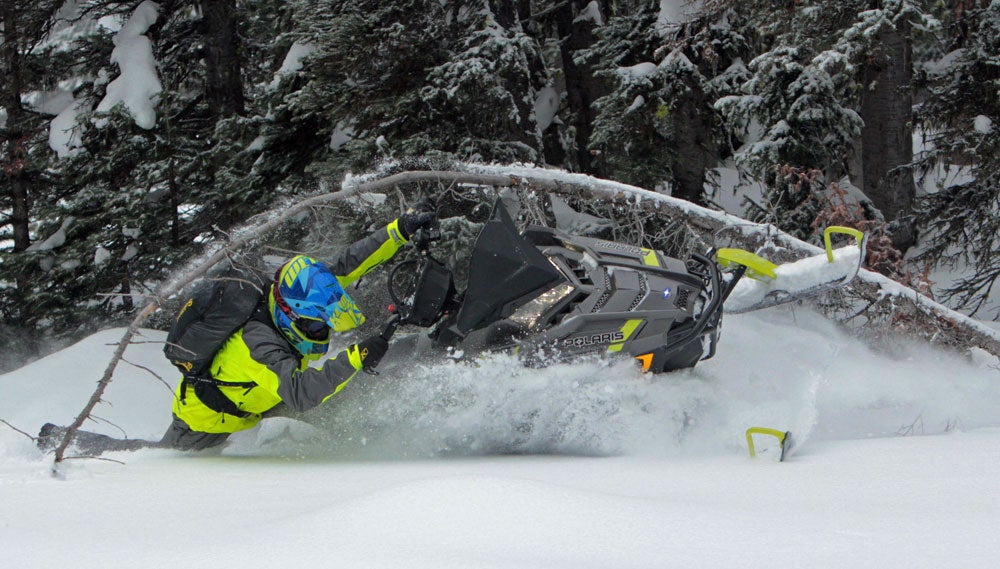
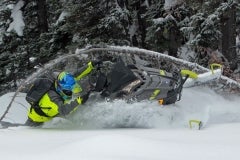
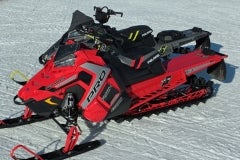
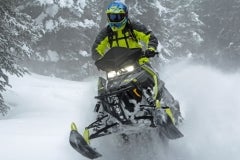
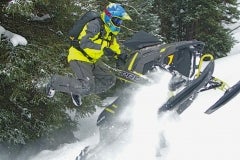
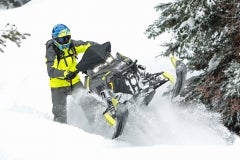
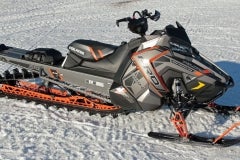
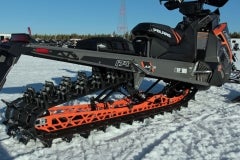
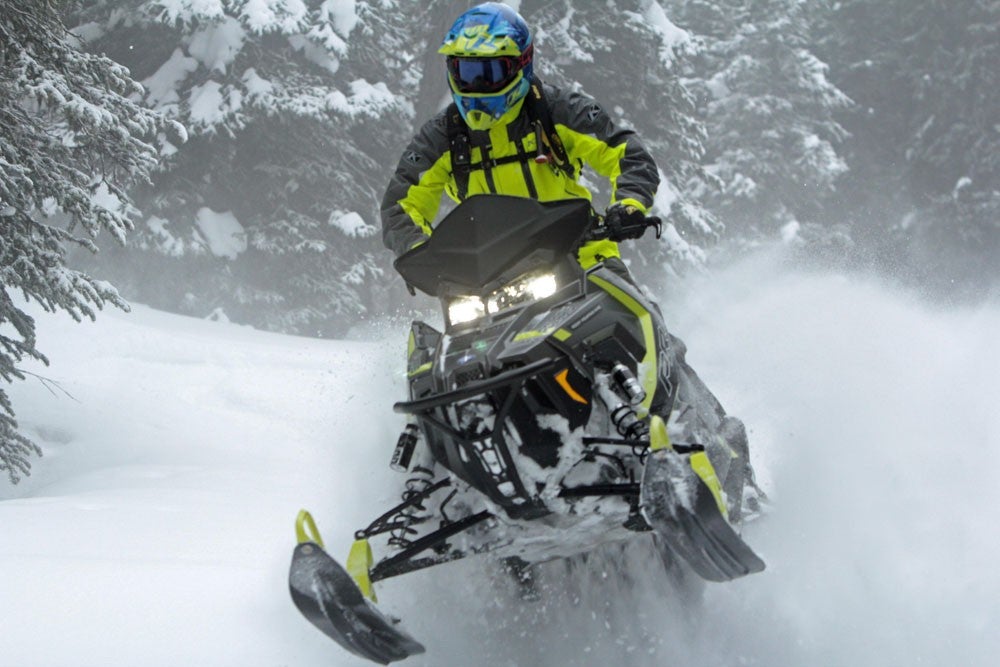

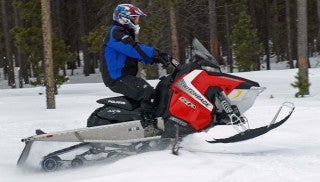
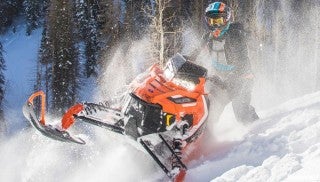


 Your Privacy Choices
Your Privacy Choices